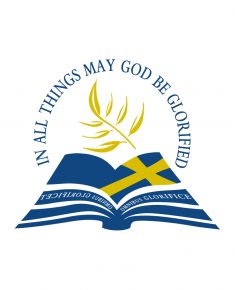Today we celebrate International Day of the World’s Indigenous Peoples (August 9, 2019). In honour of this significant day Ellie Garvey and Good Samaritan Sister Diana Law have prepared the below reflection, which looks into Aboriginal Spirituality and kinship with nature.
In a time when the ‘developed” world grapples with implementing sustainable environmental practices and we commit ourselves to ecological conversion, we are becoming more sensitive to how a future of environmental sustainability is reflected in the heart of Aboriginal Spirituality.
In 1995, David Mowaljarlai OAM (1925 1997) of the Ngarinyin people spoke the words: ‘We have a gift we want to give you. We keep getting blocked from giving you this gift: the culture, which is the blood of the country… it’s the gift of ecology, of the land itself’.
Aboriginal spirituality has always displayed a ‘reverence for life as it is’, in contrast to some societies, which have often shown a disconnect between the sacred and profane, where heaven is ‘paradise’ and all that is in this world is regarded as non-spiritual. Yet, in Aboriginal spirituality all is interconnected and imbued with a ‘life force’, including the ‘dreaming’, ‘song lines’ and the whole ‘natural world’- from the ridges, to the rivers, the emus and the trees – all, whether animate or inanimate, is living, sharing the same soul and spirit with the Aboriginal people.
This kinship with nature and of all life forms the core of being and is reflected in relationships with the land and all creation. In this way they are open to God’s presence in ways that Western society have often failed to understand; for Aboriginal spirituality sees life as it is, not how the Western world has so often wanted to shape it.
In their spirituality, Creator Spirits not only brought things to life but also taught Aboriginal people how their interconnection to all around them formed a relationship based on interdependence and inter-responsibility. All life forms, animate or inanimate, are inextricably linked to the Creative Spirit. This awareness led to the development of specific totemic, iconic ways of life. In Aboriginal Spirituality, one does not approach one’s totem with the idea of offering prayers or sacrifice for they are one with their totem, interconnected like a gold thread that runs through a tapestry.
These spiritual relationships and interrelationships give meaning to Aboriginal Law. In a 1997 statement Kenneth Jacob Wellesley says, “Our law is not like whitefella law. We do not carry it around in a book. It is in the sea. That is why things happen when you do the wrong thing. That sea, it knows; Rainbow knows as well. He is still there. His spirit is still watching today for lawbreakers. That is why we have to look after that sea and make sure we do the right thing. We now have to make sure whitefellas do the right thing as well”.
For centuries, people from Western culture have often ignored their surrounding fabric of life as they chased possessions and dollars. So often they acted as though someone was unimportant, who was not trained in so called ‘higher order thinking’. However, we are finally learning through Science and the Humanities what Aboriginal people have always known through their spirituality – all of life is interconnected, so if you pull one thread on the tapestry it harms the whole and if you continue pulling the whole tapestry eventually falls apart.
As we celebrate World Indigenous Day today, can we examine our role in preserving or pulling the ‘golden threads’ of appreciation and interconnectedness?
By reading and sharing, we can illuminate the ‘golden threads’ of their poetry, writings, art and philosophy of life to further value the ‘tapestry’ of their wisdom and spirituality.
By Ellie Garvey and Diana Law SGS


